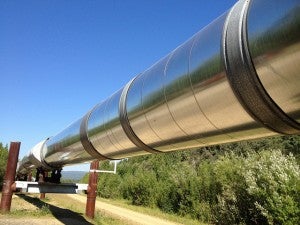Federal Proposal to Update Natural Gas Transportation Market Would Benefit Environment
 How much does the design of America’s energy market affect the environment? More than one might expect.
How much does the design of America’s energy market affect the environment? More than one might expect.
Last week, the Federal Energy Regulatory Commission (FERC), the agency responsible for regulating the wholesale natural gas and electricity markets, issued a proposed policy statement designed to encourage pipeline operators to replace their leakiest equipment: compressor stations. Reciprocating compressors are an essential part of the nation’s gas delivery system. They help move natural gas through cross-country pipelines to utilities that then deliver the fuel to its end customer. A challenge, however, is that aging compressor stations are more likely to leak as they help pump the gas to its final destination, and hundreds of these units have not been updated since the 1940’s. These leak-prone units are one of the largest sources of methane emissions —a potent greenhouse gas that can also cause explosions in some cases.
The cost to replace just one “vintage” unit can be tens of millions of dollars — one reason pipeline operators have been slow to update this equipment. Fortunately, FERC’s new proposal would provide a pathway for pipelines operators to recover the significant cost of refitting their systems with modern, safer, and more efficient compressors.
The Costs of Moving Gas to Market
Under the Natural Gas Act, FERC oversees the rates charged by the pipeline operators to gas shippers. Shippers, in most systems, are primarily the utilities that provide gas to homes, businesses, and gas-fired power plants that use large volumes of gas to generate electricity. Pipeline operators, on the other hand, move the gas but they don’t sell it. As compensation for transporting the gas, pipeline operators charge enough to cover their respective costs, plus a profit, which is reflected to their customers as a “base rate” or “recourse rate.”
Fixed rates, negotiated between the shipper and the pipeline operator for 20-25 years, keep prices from spiking. But these fixed rates also make it more difficult for pipeline operators to justify capital investments to upgrade their leaky systems.
This is especially true of pipeline expansion projects. In these situations, new customers may be charged based on a revised recourse rate, but incumbent shippers are protected from price increases under the aforementioned fixed rate — another example of how the market design tends to limit pipeline operators from making vital capital investments that could reduce methane emissions and minimize safety risks.
Modernizing the Gas Delivery System
FERC’s new proposal is a step in the right direction to remove some of the barriers to retrofitting environmentally damaging equipment. It would allow pipelines to recover costs through a proposed modernization surcharge mechanism also known as a “cost tracker.”
According to the proposal, cost trackers could be used for:
“one-time capital costs to modify the pipeline’s existing system to comply with safety and environmental regulations, such as those being considered by the Pipeline and Hazardous Materials Safety Administration (PHMSA) and by the EPA…”
These investments would not only keep pipeline operators in compliance with pending federal rules, they would also lower the occurrence of leaks that contribute to climate change and pose safety risks.
The proposed policy would require pipeline operators to work collaboratively with shippers to establish the surcharge, and to protect shippers against unjust and unreasonable rates or unauthorized cost-shifting to cover expenses other than those authorized for the cost tracker.
Market Design Matters to Environmental Outcomes
Pipelines are regulated entities, but unless they have the financial tools to modernize their equipment, the status quo will rule the day, putting safety and the environment at risk. Market-based, incentive-focused policies can help ensure vintage, reciprocating compressors will not persist beyond their useful lives and continually leak methane emissions that harm our environment and compromise the system’s safety.
FERC rules and the design of our energy market have significant bearing on safety and environmental outcomes, yet, as my colleagues Jim Tripp and Christopher Bateman pointed out in their recent blog post, federal energy and environmental policies have not always been in sync.
FERC’s proposed policy statement is a step in the right direction, and we are seeing hopeful signs of new synergy as energy market designs are updated in support of clean energy transformation. In this blog and through our work with agencies like FERC, we will continue to advocate for market policies that create incentives to efficiently and effectively cut climate pollution and continue the much needed transition to a cleaner energy system.
Photo source: Flickr/Maureen











